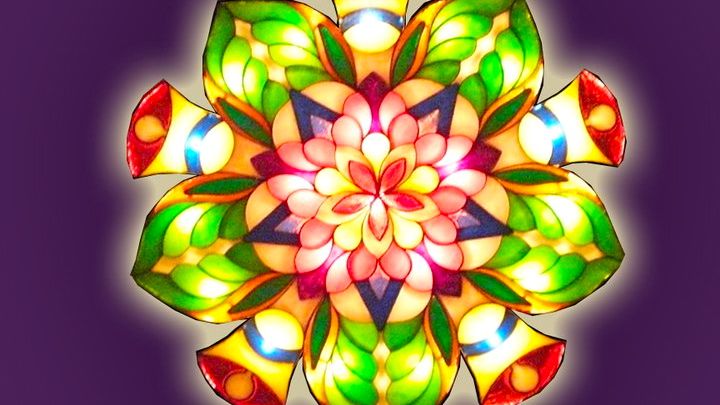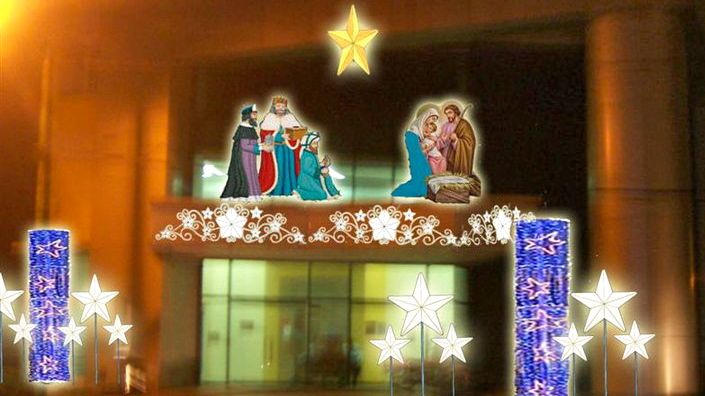SUMMARY
This is AI generated summarization, which may have errors. For context, always refer to the full article.

MANILA, Philippines – Christmas may be celebrated in 60 other countries but Christmas in the Philippines will always be one of a kind.
The season starts the earliest here with supermarkets playing Christmas songs as early as September.
Let this list of 10 Christmas elements remind us what makes Christmas in the Philippines distinctly our own:
1) The parol
Christmas in the Philippines is as incomplete without a parol as the night sky is without the north star.
This star-shaped lantern made of wooden sticks, paper or plastic is a fixture in many a Christmas-decorated home. Its popularity has given way for the creation of many versions such as the more expensive parols made of capiz and even sea shells. They are often found in front of doors and windows, leading us home as one star led shepherds and kings to Baby Jesus.
2) The belen
This beautiful tableau depicting the birth of Jesus Christ comes in many sizes, from palm-sized 3-dimensional wood carvings to life-sized ones in shopping malls.
Common fixtures of the belen — a word derived from the Spanish name for Bethlehem — are Baby Jesus in his manger, St. Joseph and Mother Mary, the stable animals, shepherds, Magi, an angel and a star watching over the entire scene.
3) Simbang Gabi
Also known as Misa de Gallo or “Rooster’s Mass” in Spanish, the Simbang Gabi starts on December 16 and ends on Christmas Eve.
Churches usually celebrate two masses, one at dawn and an anticipated one in the evening. The Advent Wreath by the altar, the Christmas decorations, the lively Christmas songs sung at the end of the mass all make the Simbang Gabi a warm, cozy and memorable affair.
4) Puto bumbong and bibingka
Sure, you can get these two Filipino desserts any time of the year but they attain a special place in our stomachs particularly during Christmas time when they are sold in smoky stalls near churches celebrating Simbang Gabi.
After the mass, people head straight to these stalls and enjoy an early breakfast in the company of family members, friends and neighbors. Best served with a mug of steaming hot chocolate, puto bumbong and bibingka are the best ways to prepare your stomach for the Christmas feast to come.
5) Famous Filipino Christmas songs
“Kumukutikutitap, bumubusibusilak…” I’d be surprised if you couldn’t complete those lyrics.
“Kumukutikutitap” is just one of the many well-loved songs our fellow countrymen have written in devotion to the Christmas season. For those who appreciate a more soulful, romantic touch, “Pasko na Sinta Ko” tops their Christmas playlists. And let’s not forget the classic “Ang Pasko ay Sumapit” and Jose Mari Chan’s popular “A Christmas Carol” and “Christmas in our Hearts.”

6) Pangangaroling
Christmas is the time when many young Filipinos bring out their passion for performance and song by singing in front of houses accompanied by instruments ranging from guitars to tin cans and spoons.
Some friendly neighbors are nice enough to offer them coins or food for which they are rewarded with a hearty, “Thank you, thank you, ang babait ninyo (you are so kind), thank you!”
7) Noche Buena
After Misa de Gallo on Christmas Eve, all head home for Noche Buena, the traditional midnight feast where queso de bola (a ball of edam cheese encased in red wax), hamon (Christmas ham) and tsokolate take their special places on the dinner table.
After the feast, the family gathers beneath the Christmas tree to open presents.
8) Aguinaldo
It is also usually during Noche Buena when the aguinaldo is distributed, usually among the older children in the family.
The Spanish term for bonus, the aguinaldo is gift money. This tradition is said to come from the time of the Spanish colonial period when Filipino workers received extra pay from their employers during the Christmas season.
9) Panunuluyan
Another Christmas Eve tradition, panunuluyan is more commonly observed in the provinces.
Actors dress up as Joseph and Mary and visit pre-designated houses in a re-enactment of the night Jesus was born. They call to the residents of the houses through song but they are turned away. Eventually, they make their way to the Parish church where a stable is set up. Misa de Gallo is then celebrated.
10) Three Kings
Another celebration ends the Christmas season!
Celebrated on the first Sunday after January 1, this special day is marked by children leaving their shoes out in hopes that the departing Three Kings will leave some candy or money in them.
We have a little more than 3 weeks to Christmas. Are you done with your Christmas shopping and ready for Simbang Gabi?
Let us know by posting your comments below. – Rappler.com
Add a comment
How does this make you feel?
There are no comments yet. Add your comment to start the conversation.